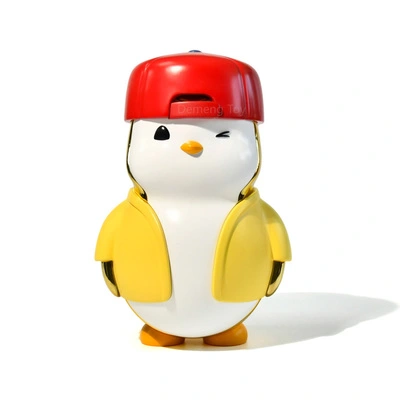
Dive into the fascinating world of custom action figures and discover your hidden artistic talents!
This practice elevates collecting into artistic self-expression and character realization.
Whether expert or beginner, use these tips to build, finish, and monetize custom figure projects.
We break down selecting bases, sculpting details, and advanced painting to make unique figures worth selling.
- Choose base figures with compatible joints and surface finish suitable for repainting.
- Master painting techniques: learn priming, layering, shading, and sealing for professional finish.
- Test kitbashing methods and small-scale sculpting to dramatically change a figure’s identity.
- Upload high-quality photos and listings, offer limited runs, and engage communities to monetize creations.

Create-to-Sell: DIY Action Figures for the Artisan Entrepreneur
Begin sculpting custom figures that combine artistic merit with commercial viability for your shop.
- Start planning with character traits and visual references to produce marketable designs.
- Draw iterative sketches to establish proportions, costume flow, and accessory scale.
- Prepare workbench supplies: putty, sculpt tools, adhesives, and a selection of paints and varnishes.
- Craft fine details with small tools and magnification to achieve high-quality tactile finishes.
- Practice layering, contrast modulation, and final sealing to secure paint longevity and resale value.
Advanced Modding: From Base Figure to Custom Icon
Want to make standout pieces? Apply modification techniques to craft sellable custom figures.
* **Sculpting:** Work with polymer putties and fine tools to sculpt durable, sale-ready details.
* **Painting:** Effective painting involves proper Action Figure Manufacturer surface prep, controlled layers, and protective finishes.
* **Accessories:** {Get creative with found objects and spare parts to craft unique weapons and stands.|Repurpose tiny components and kitbash parts to create distinctive props and display bases.|Combine printed parts, metal bits, and kitbashed pieces for specialty accessories.|Use 3D-printed or scratch-built accessories to increase perceived value and uniqueness.|Craft accessories from small-scale materials or print custom items to enhance desirability.|Invent accessories by converting everyday items into miniature props that pop on shelves.|Design removable and interchangeable accessories to offer collectors customization options.|Produce themed accessory sets that pair with figures to boost bundle sales and interest.|
From Prototype to Production: The Manufacturing Pipeline
Skilled sculpting and technical digitization transform an idea into molds, then into mass-produced figures.
From molded components to final QC, each stage ensures the fidelity and durability of the produced figures.
High-quality production and authentic design increase a custom figure’s desirability and resale potential.

Sculptural Techniques for One-of-a-Kind Figures
Custom figure design is an interdisciplinary craft combining art direction, sculpt, and production planning.
Producing collectible customs takes concept clarity, sculpt refinement, and consistent finishing discipline.
Must-Have Tools: Sculpting and Finishing Action Figures
- Miniature surgical-quality cutting tools to refine small parts and accessory pieces.
- Premium sculpting compounds that cure hard and retain sharp detail for collectibles.
- An expansive range of paints for base color, shading, and special effects.
- High-quality small brushes for smooth strokes and tiny highlights in detailed areas.
- A precision scalpel-style knife for meticulous shaping and tiny detail refinement.
Figure Construction Essentials
Begin with the main torso and shell, which can be molded from ABS, PVC, or resin for strength.
Then incorporate the internal skeleton—joints, ball fittings, and connectors that allow dynamic poses.
Distinct props and display bases create complete scenes that increase shopper engagement.
Finish work—painting, weathering, and sealing—creates the final visual impact for collectors.
From Plastic to Perfection: Painting and Finishing Your Custom Figures
To achieve pro finishes, clean and sand parts carefully and prime to ensure paint adhesion.
Use fine brushes for detail work and layer paints gradually—build highlights and shadows step by step.
Use appropriate sealant layers to lock in colors and protect painted surfaces during handling and shipping.
Conversations with Renowned Action Figure Designers
Read artist interviews that uncover techniques, career paths, and tips for aspiring customizers.

Collectors Rally: Showcase & Swap
If your shelves overflow with classics or customs, join events to share, trade, and learn new techniques.
Join the community to exhibit your figures, inspire peers, and enter fun, themed competitions.
- Connect online and in person to swap gear, commission customs, and co-create display series.
- Use community resources—guides, forums, and peer feedback—to upgrade your craft and display.
- Showcase entries in competitions to gain exposure and potentially sell or commission new works.
Choosing the Right Manufacturer
Pick manufacturers based on detail reproduction, material handling, and responsiveness to custom specs.
- Research factory portfolios to identify experience with articulation, paint ops, and small-batch runs.
- Confirm prototype proportion, joint action, and repeatable quality before committing to a manufacturer.
- Insist on sample material tests to ensure the final product meets collector standards and brand promises.

Choosing well impacts consistency, lead times, and your reputation with collectors and retailers.